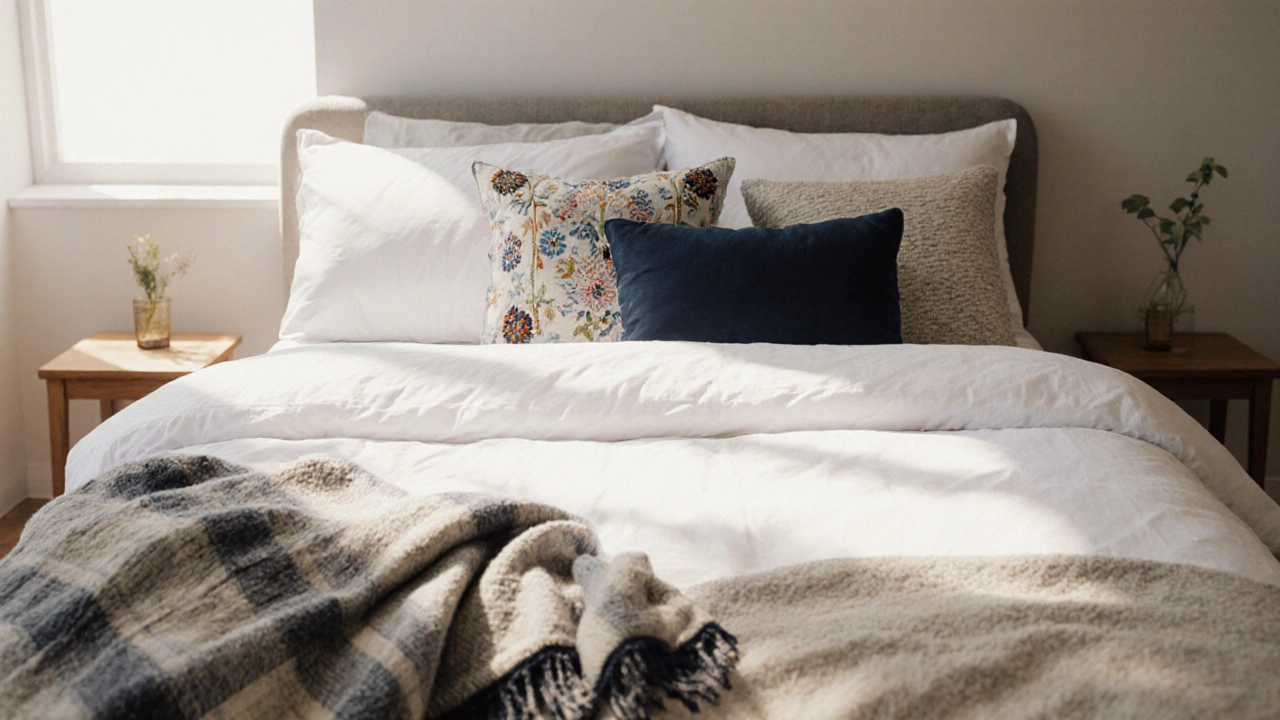Bedding Classification Made Simple: What Every Shopper Should Know
When you walk into a bedroom store, the word "bedding" can feel overwhelming. Sheets, pillowcases, duvets, blankets – what’s the difference? This guide breaks down the main classifications, the materials behind them, and how to pick and care for each piece without the jargon.
Core Bedding Categories
First, let’s group the basics. The most common types you’ll see are:
- Sheets – the flat and fitted pieces that cover the mattress.
- Pillowcases – protect the pillow and add a style touch.
- Blankets & Throws – extra layers for warmth or decoration.
- Duvet Covers & Comforters – the fluffy top layer that keeps you cozy.
- Mattress Protectors – waterproof or breathable shields that guard against spills.
Each category serves a specific purpose, and knowing that helps you match the right item to the right need.
Materials That Matter
Now that you know the groups, look at what they’re made of. Material choice affects feel, durability, and how you wash them.
- Cotton – soft, breathable, and easy to wash. Egyptian and Pima cotton are premium, but regular combed cotton works well for everyday use.
- Linen – great for hot climates, gets softer with each wash, but wrinkles a lot.
- Microfiber – synthetic, ultra‑smooth, often cheaper, and dries fast. Can feel less breathable than natural fibers.
- Silk – luxurious, good for skin and hair, but needs gentle washing or dry‑cleaning.
- Flannel – brushed cotton or wool, perfect for winter because it traps heat.
Mix and match based on season and personal preference. For example, a cotton sheet set for summer and a flannel blanket for winter works for most homes.
When you buy a duvet, check the fill type. Down offers light, high‑quality warmth but can trigger allergies. Synthetic fills mimic down’s loft and are hypoallergenic, though they’re a bit heavier.
Don’t forget thread count. Higher numbers often mean a tighter weave, but beyond 400 the difference feels minimal. Focus more on material and weave type than the exact count.
Finally, consider weave. Percale is crisp and cool, while sateen has a silky sheen and feels warmer.
With this material rundown, you can pick the right pieces that fit your comfort level and budget.
Maintenance is the next step. Most cotton and microfiber items survive machine washing on a normal cycle. Linen and silk need a gentle cycle or hand wash. Always follow the label – it saves you from shrinking or losing softness.
Drying tips: tumble dry low for cotton, air‑dry for silk, and use dryer balls for fluffy blankets to keep the fill from clumping.
To extend life, rotate your pillowcases and sheets every week, and wash them in warm water to kill dust mites. A simple weekly routine prevents stains from setting and keeps the fabric fresh.
In short, understanding bedding classification helps you shop smarter, sleep better, and keep everything looking good for years. Pick the right category, choose a comfortable material, and follow easy care steps – your bedroom will thank you.
Bedding Definition: What Items Count as Bedding?
Discover what items truly count as bedding, from mattresses and pillows to duvets and decorative throws. Learn classifications, materials, care tips, and buying advice for a perfect bedroom setup.
